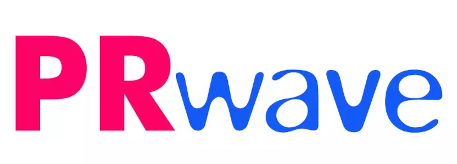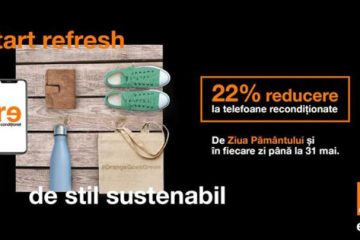 The Best Act Award is a unique advertisers’/client’s jury award for a superior Idea that makes us change the way we think, feel and behave. Four well-known marketing and brand managers of major international companies will sit in the Best Act jury. The initial Best Act selection will be made by Golden Drum juries and will include all shortlisted entries. The Best Act jury will then judge them by another set of Best Act criteria. Jurors will be looking for ideas so powerful that they truly move people, thus making a qualitative difference in people’s lives. An Act is not just an intelligent idea, but an inspiring one. An Act is a human-centered brand gesture, idea or experience, or a concrete action that enables people to engage with the brand. The Best Act Award rewards the power of creativity to transform human behavior.
The Best Act Award is a unique advertisers’/client’s jury award for a superior Idea that makes us change the way we think, feel and behave. Four well-known marketing and brand managers of major international companies will sit in the Best Act jury. The initial Best Act selection will be made by Golden Drum juries and will include all shortlisted entries. The Best Act jury will then judge them by another set of Best Act criteria. Jurors will be looking for ideas so powerful that they truly move people, thus making a qualitative difference in people’s lives. An Act is not just an intelligent idea, but an inspiring one. An Act is a human-centered brand gesture, idea or experience, or a concrete action that enables people to engage with the brand. The Best Act Award rewards the power of creativity to transform human behavior.
The winners will receive Golden or Silver Winged Nike. The awards will be presented among other Golden Drum 2010 Awards at the Closing Gala on Saturday, October 9.
BEST ACT AWARDS JURY – CLIENTS’ JURY
Paul Jackson, Board Member World Federation of Advertisers – president of the jury
Philip Hans List, Head of Group Marketing, Erste Group Bank AG
Andrew Hammett, Global Advertising Development Department CEEMEA, Procter & Gamble, Germany
Caroline Lilius, Vice President of Marketing, Helsingin Sanomat, Finland
Interview with Andrew Hammett, Global Advertising Development Department CEEMEA, Procter & Gamble, Germany and Caroline Lilius, Vice President of Marketing, Helsingin Sanomat, Finland
How will you judge the works? What are you looking for in it? What are your criteria for a good design? And how would you define a bad design?
AH: As part of the best Act jury I will be focusing on the strength of the idea itself – this is what the award calls for! Campaignability (i.e. whether it can or has run for some time) will not be the first criteria, although, as with any idea, this is an important consideration to help decide between equal ideas, as is also whether the idea travels across the different media (and could inspire more). And as last year’s President, I can say this is what we did last time too. Good ideas motivate consumers and are distinctive within the category – so those will be very important in my judging. I will give more weight to these aspects and much less to actual execution for the Best Act award. However, I am sure that the new president will also want to discuss with his jury just how he thinks we should judge –so I do not want to pre-empt that!
CL: I am looking forward to dig into the campaigns. I will be looking for great ideas and interesting executions. I believe in simple good ideas that touch people´s everyday life. A good campaign communicates effectively, is based on a unique idea and is innovative in execution and use of communication channels. A bad campaign lacks energy and ambition on all levels.
Advertising is obviously changing fast lately or as we say, it is under reconstruction. Into what? And how will it look like in the next five (10, 20) years?
AH: That is too big a question for a simple email! Of course we have changing consumers (less patient) and a changing media landscape. However, I think big ideas will continue to be very important, as they were in the past – this is one reason I am so happy to be on the best Act jury again!
CL: Advertising moves in the forefront of new ideas and opportunities. Advertising campaigns have become much more complex utilizing different evolving opportunities and offering many different touchpoints with the consumer. This development will continue. I believe great ideas will survive and even become more important. Standing out from the crowd will continue to be an issue as well as combining traditional media with new channels. The consumer will be harder to convince, charm and reach. Ethics and sustainability will remain important.
Why is there so little awarded (creative) advertising seen in everyday life? And why all we see is sales-promotion, no-brand-building, pushy-brainwashing? Where are well designed things? Or do I have a wrong opinion?
AH: Again, this is a big question –too big for a short email answer. In fact you are asking two questions here, 1, why do we not see so much awarded creative work in everyday life and 2, is too much work not trying hard enough to build long term brand image? There is plenty of work that both wins creative and Effie awards, but I think Stefan Schmidt last year in his awards speech put it very well; there seems to be too much work that is really for competition only. Often this work is not clear enough to be understood by normal consumers (there is a fine line between being intriguing and being confusing!) and poorly branded. I would agree with you that much work does not seem to be building brand equity strongly enough either. I believe that two reasons are tight budgets and more time pressure, so that short term project promotional needs can get in the way of long term brand building.
CL: It is a combination of time pressures, lack of belief in advertising and creative work and separating brand and long term from sales and short term. Money and lack of budget is often mentioned but I feel it is more a question about ambition and attitude. I know good ideas are not much more expensive that bad ones. For attitudes to change I believe that moves from big advertisers like P&G are important for the industry.
 Andrew Hammett, Global Advertising Development Department CEEMEA, Procter & Gamble, Germany
Andrew Hammett, Global Advertising Development Department CEEMEA, Procter & Gamble, Germany
Andrew Hammett has for the past 25 years worked on most categories at Procter & Gamble. He is a part of a small global specialist internal consultancy for communication development, learning and training, called advertising development and is currently responsible for supporting communication in their CEEMEA region (Central Eastern Europe, Middle East and Africa) for all fabric and care brands and for laundry brands in all low income (developing) markets globally. He loves this region for its diversity and the fascinating socio-political dimensions to the work.
Andrew is based in Frankfurt. He went to Oxford University where he got his chemistry degree. In his spare time he is a member of the board of Oxfam in Germany and consultant to Oxfam International as well as a keen sportsman.
 Caroline Lilius, Vice President of Marketing, Helsingin Sanomat, Finland
Caroline Lilius, Vice President of Marketing, Helsingin Sanomat, Finland
Caroline Lilius is the VP Marketing at Helsingin Sanomat, the leading newspaper in Finland. Heading a team of abt 35 professionals in marketing, brand, advertising, sponsorships, research, product management, human resources etc. She is responsible for developing marketing and brand competencies on divisional level.
Caroline has 27 years of working history in the media business at Sanoma ranging from consumer research, media sales, planning and development to consumer and b-to-b marketing and over 20 years experience in advertising and agency relationships with a passion for great campaigns.
In 2010 she was awarded the Client Lifetime Achievement Award at Vuoden Huiput, the most prestigious creative award show in Finland.
Caroline is also a member of the board of Joint Industry Committee of Readership research and Circulation and member of the Marketing Board of the Newspaper Industry. Her hobbies are arts, wine, outdoor & dogs.
 Philip Hans List, Head of Group Marketing, Erste Group Bank AG, Austria
Philip Hans List, Head of Group Marketing, Erste Group Bank AG, Austria
Philip has graduated from the Law Faculty at the University of Graz, and spent a court internship at the Graz courthouse. He then moved on to the Erste oesterreichische Spar-Casse-Bank AG as an assistant to the board, and in 1996 to MEAD Coated Board Europe where he wroked as an area manager for Scandinavia, Benelux, Spain and Portugal. After 3 years he tranferred into advertising and joined Bárci & Partner advertising agency as a personal assistant to Mr Tibor Bárci. He worked on the Erste Bank account and within a year he was back at the bank.
From 2000 he has worked his way up the company structure from Head of Marketing Central and Eastern Europe, Head of Group Advertising, Head of Community Affairs & Sponsoring to his current position of Head of Group Marketing.
 Paul Jackson, Board Member World Federation of Advertisers – jury president
Paul Jackson, Board Member World Federation of Advertisers – jury president
Paul is an experienced marketer, who worked for 25 years with Mars, predominately in Continental Europe, as a General Manager in Holland and Spain and latterly as Marketing Director for the Mars Chocolate Business in EMEA. He is involved in issues relating to responsible commercial communications and children through his roles on the Board of the World Federation of Advertisers and his Chairmanship of the Responsible Advertising and Children group.
Paul is a founder and Chairman of Media Smart, a media literacy programme that develops and provides, free of charge and on request, educational materials to primary schools that teach children to think critically about advertising in 8 European counters, with further expansion planned in Europe and South America. Media Smart is recognised by many as a world-class media literacy programme and has recently launched an important innovation with its third teaching pack which focuses on the highly topical digital and online marketing techniques.
He advises a number of blue chip multinational companies on marketing issues through his business Silverfin Brand Doctors and is a partner in the employer branding consultancy Branding for Talent. He is also an Honorary Fellow of the Brunel University Business School.




